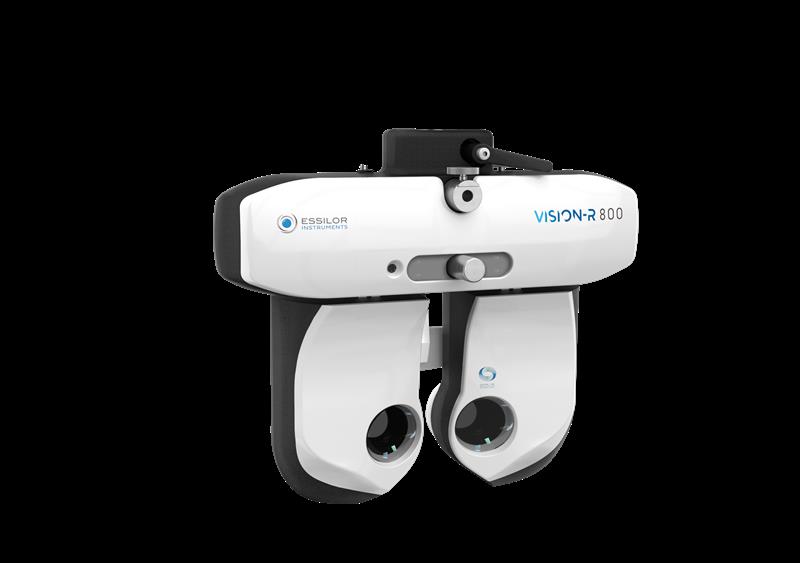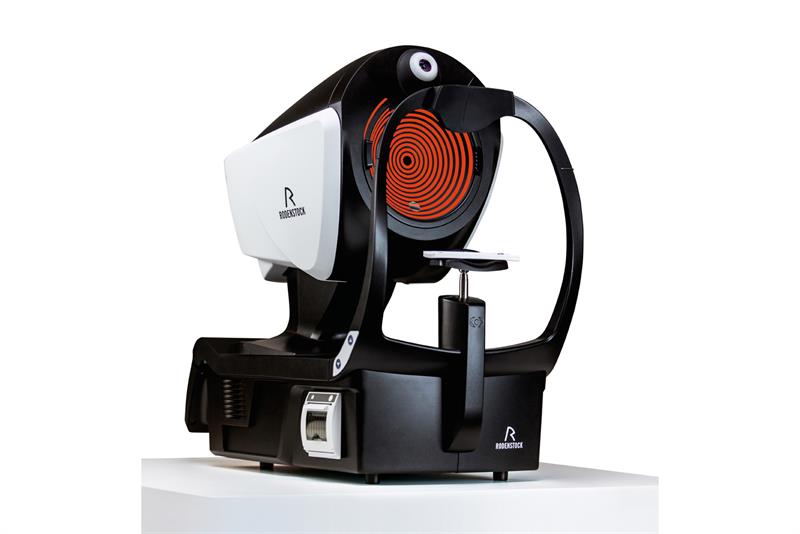
Lenstec: Scene & Scene/Exceed
While it would be easy to assume that personalisation is only worthwhile for patients requiring progressive lenses, Lenstec has broadened its individualised portfolio with the addition of Scene & Scene Plus antifatigue single vision lenses. Lenstec says single vision dispenses can be maximised with the addition of several facial fit parameters including vertex, pantoscopic angle and wrap. The lens uses Digital Ray Path 2 technology, which the company says provides vision with sharper
Lenstec’s Exceed, Exceed Drive and Exceed Easy Camber progressive lenses, use the same face fit parameters to ensure the best optical correction, but practitioners can tailor-make the design to complement your patient’s lifestyle by selecting a general or mobile (device user) wearer profile. Other options such as customisable inset and corridor length all add up to a lens unique to a patient’s physiology and lifestyle.
• lenstecopticalgroup.co.uk
Hoya: Hoyalux iD Myself & Visureal Master
The Hoyalux iD Myself is designed to deal with the visual habits of the modern progressive lens wearer that wants pin sharp near and intermediate vision for digital devices, with no comprise on distance performance. At the heart of the design is Hoya’s Binocular Harmonisation Technology and 3D Binocular Vision, which balance differences in power between right and left eyes and control unwanted prismatic effects within the periphery of the lens.
Hoya says nearly three-quarters of presbyopes have different prescriptions in their right and left eyes, so this technology should make a big difference in visual performance and reductions in sway effects and distortion. Helping with lens centration measurements is the Visureal Master, which combines both hardware and software elements, along with a multi-camera set up that captures multiple photos of the patient to determine optimal centration data. Unlike some other centration systems, the device requires no additional frame attachments and all measurements are taken in one step, with the patient only seeing the mirror in which they see themselves.
• hoyavision.com
Nikon: SeeMax Technology/Lenswear-I
Nikon says SeeMax Technology is its most advanced lens customisation technology, which offers patients extraordinary visual precision with unsurpassed comfort. An eight-axis optimised design paired with frame shape optimisation, refines the whole lens surface for the patient’s prescription, visual performance and visual comfort. This dual technology helps deliver stabilised vision in all directions of gaze, while pushing residual aberrations outside of the lens shape to ensure the usable area of the lens remains as sharp as possible.
Nikon says this means the patient experiences wide and clear vision, even with large lens sizes, allowing them to have a more natural field of view with enhanced aesthetics. SeeMax Technology is available in both progressive and single vision lens designs, including the advanced SeeMax Ultimate and SeeMax Infinite. SeeMax is just one of the lens options in Nikon’s portfolio that utilise position of wear measurements captured by the Lenswear-I all-in-one dispensing tool. The device measures lens centration and position of wear measurements quickly while ensuring the highest precision optics for the best vision.
• nikonlenswear.co.uk
Essilor: Advanced Vision Accuracy (AVA)
AVA is a joined-up patient experience that brings together refraction, measurement and precision manufacturing. The two main pillars of AVA are the Vision R-800 phoropter, pictured left, and Visioffice X measurement device. The Vision R-800 uses automated motors to provide instantaneous changes of sphere, cylinder and axis. The company says this allows practitioners to reach a final prescription more quickly. Equipped with facial recognition and HD cameras, the Visioffice X allows the practitioner to personalise the lens as a result of the wide range of data the device is able to capture. The unit combines fitting, physiological and behavioural measures to generate what Essilor says is a complete vision diagnostic for patients.
Optometrist James Allen from David Inman Opticians has been an AVA user since the system was launched in 2019. ‘We’ve used it on all of our patients and they’ve been wowed by the clarity of their new glasses. The refraction process has become very easy. The patient feels less fatigued thanks to a quicker sequence of tests with differences being easier to perceive and therefore responses are easier to give, resulting in more relaxed, happier patients,’ says Allen.
• ecp.essilor.co.uk/products/instruments

Rodenstock: Biometric Intelligent Glasses (BIG)
According to Rodenstock, 98% of all progressive lens wearers do not wear lenses that have been optimised for their eyes. BIG lenses leverage the data capture potential of the company’s DNEye scanner, pictured above, to provide a more complete and individualised set of measurements. Patients’ eyes can be measured to create a unique biometric eye model to base their calculations on and create lenses that match each person. As well as recording values for myopia, hyperopia and corneal shape, the DNEye scanner records reaction of the pupil during day and night-time conditions to detect where aberrations responsible for reduced contrast sensitivity and poor vision during twilight. Using the data captured by DNEye, Rodenstock then uses an algorithm that determines all parameters of the individual’s eye, like power of the crystalline lens and axial length. This data set is then transferred to the lens during production.
• rodenstock.com/uk

